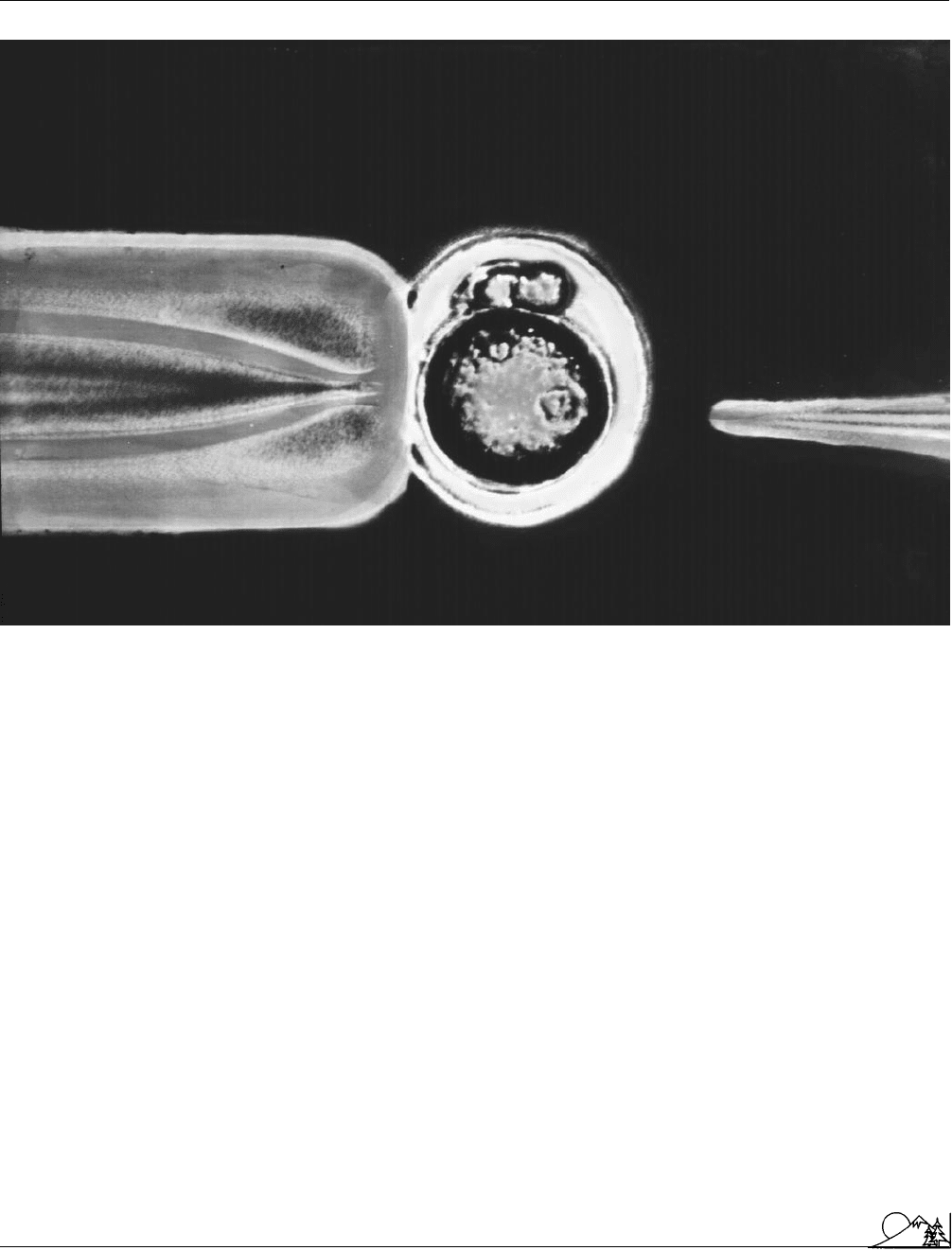Environmental Encyclopedia
Подождите немного. Документ загружается.


Environmental Encyclopedia 3
Garbage
Mohandas Karamchand Gandhi. (AP/Wide
World Photos. Reproduced by permission.)
his work seems increasingly relevant to a world with limited
resources and a rapidly growing population.
[Usha Vedagiri and Douglas Smith]
R
ESOURCES
B
OOKS
Chadha, Yogesh. Gandhi: A Life. Wiley, 1998.
Fischer, L. The Life of Mahatma Gandhi. New York: Harper, 1950.
Mehta, V. Mahatma Gandhi and His Apostles. New York: Viking, 1977.
Garbage
In 1999, the United States generated 230 million tons of
municipal solid waste
, compared with 195 million tons
in 1990, according to
Environmental Protection Agency
(EPA) estimates. On average, each person generated 4.6 lb
(2.1 kg) of such waste per day in 1999, and the EPA expects
that amount to continue increase. That waste includes cans,
bottles, newspapers, paper and plastic packages, uneaten
food, broken furniture and appliances, old tires, lawn clip-
617
pings, and other refuse. This waste can be placed in landfills,
incinerated, recycled, or in some cases composted.
Landfilling—waste disposed of on land in a series of
layers that are compacted and covered, usually with soil—
is the main method of
waste management
in this country,
accounting for about 57%of the waste. But old landfills
are being closed and new ones are hard to site because of
community opposition. Landfills once were open dumps,
causing unsanitary conditions,
methane
explosions, and re-
leases of hazardous
chemicals
into
groundwater
and air.
Old dumps make up 22% of the sites on the Superfund
National Priorities List
. Today, landfills must have liners,
gas collection systems, and other controls mandated under
Subtitle D of the
Resource Conservation and Recovery
Act
(RCRA).
Incineration
has been popular among
solid waste
managers because it helps to destroy bacteria and toxic chem-
icals and to reduce the volume of waste. But public opposi-
tion, based on fears that toxic metals and other chemical
emissions will be released from incinerators, has made the
siting of new facilities extremely difficult. In the past, garbage
burning was done in open fields, in dumps, or in backyard
drums, but the
Clean Air Act
(1970) banned open burning,
leading to new types of incinerators, most of which are
designed to generate energy.
Recycling
, which consists of collecting materials from
waste streams, preparing them for market, and using those
materials to manufacture new products, is catching national
attention as a desirable waste management method. As of
1999, all states and the District of Columbia had some
type of statewide recycling law aimed at promoting greater
recycling of glass, paper, metals,
plastics
, and other materi-
als. Used oil, household batteries, and lead-acid automotive
batteries are recyclable waste items of particular concern
because of their toxic constituents.
Composting
is a waste management approach that
relies on heat and microorganisms—mostly bacteria and
fungi—to decompose yard wastes and food scraps, turning
them into a nutrient-rich mix called
humus
or compost.
This mix can be used as
fertilizer
. However, as with landfills
and incinerators, composting facilities have been difficult to
site because of community opposition, in part because of the
disagreeable smell generated by some composting practices.
Recently, waste managers have shown interest in
source reduction, reducing either the amount of garbage
generated in the first place or the toxic ingredients of garbage.
Reusable blankets instead of throw-away cardboard packag-
ing for protecting furniture is one example of source reduc-
tion. Businesses are regarded as a prime target for source
reduction, such as implementing double-sided photocopying

Environmental Encyclopedia 3
Garbage Project
to save paper, because the approach offers potentially large
cost savings to companies.
[David Clarke]
R
ESOURCES
B
OOKS
Blumberg, L., and R. Gottlieb. War on Waste: Can America Win Its Battle
With Garbage? Washington, DC: Island Press, 1989.
Underwood, J., A. Hershkowitz, and M. de Kadt. Garbage—Practices, Prob-
lems, Remedies. New York: INFORM, 1988.
U.S. Office of Technology Assessment. Facing America’s Trash: What Next
For Municipal Solid Waste? Washington, DC: U.S. Government Printing
Office, 1989.
Garbage Project
The
Garbage
Project was founded in 1973, shortly after
the first
Earth Day
, by William Rathje, professor of anthro-
pology, and fellow archaeologists at the University of Ari-
zona. The objective was to apply the techniques and tools
of their science to the study of modern civilization by analyz-
ing its garbage.
Using sample analysis and assessing biodegradation,
they also hoped to increase their understanding of resource
depletion and environmental and landfill-related problems.
Because it requires sunlight, moisture, and oxygen, as well
as organic material and bacteria, little biodegradation actually
takes place in landfills, resulting in perfectly preserved heads
of lettuce, 40-year-old hot dogs, and completely legible 50-
year-old newspapers.
In Rubbish: The Archaeology of Garbage, published in
1992, Rathje and Atlantic Monthly managing editor Cullen
Murphy discuss some of the data gleaned from the project.
For example, the accumulation of refuse has raised the City
of New York 6–30 ft (1.8–9 m) since its founding. Also,
the largest proportion—40%—of landfilled garbage is paper,
followed by the leftovers from building construction and
demolition. In fact, newspapers alone make up about 13%
of the total volume of trash.
Just as interesting as what they found was what they
did not find. Contrary to much of public opinion, fast-food
packaging made up only one-third of 1% of the total volume
of trash landfilled between 1980 and 1989, while expanded
polystyrene
foam accounted for no more than 1%. Even
disposable diapers
averaged out at only 1% by weight of
the total
solid waste
contents (1.4% by volume). Of all
the garbage examined,
plastics
constituted from 20–24%.
Surveys of several national landfills revealed that organic
materials made up 40–52% of the total volume of waste.
The Garbage Project also debunked the idea that the
United States is running out of space for landfills. While it
618
is true that many landfills have been shut down, it is also
true that many of those were quite small to begin with
and that they now pose fewer environmental hazards. It is
estimated that one
landfill
120 ft (35.4 m) deep and measur-
ing 44 mi
2
(71 km
2
) would adequately handle the needs of
the entire nation for the next 100 years (assuming current
levels of waste production).
In “A Perverse Law of Garbage,” Rathje extrapolated
from “Parkinson’s Law” to define his Parkinson’s Law of
Garbage: “Garbage expands so as to fill the receptacles avail-
able for its containment.” As evidence he cites a Garbage
Project study of the recent mechanization of garbage pick-
up in some larger cities and the ensuing effects. As users
were provided with increasingly larger receptacles (in order
to accommodate the mechanized trucks), they continued to
fill them up. Rathje attributes this to the newfound conve-
nience of disposing of that which previously had been con-
signed to the basement or secondhand store, and concludes
that the move to automation may be counterproductive to
any attempt to reduce garbage and increase
recycling
.
[Ellen Link]
R
ESOURCES
B
OOKS
Rathje, W. L., and C. Murphy. Rubbish!: The Archaeology of Garbage. New
York: Harper Collins, 1992.
P
ERIODICALS
Lilienfeld, R. M. “Six Enviro-Myths: Recycling is the Key.” New York
Times (January 21, 1995): 23(L).
Rathje, W. L. “A Perverse Law of Garbage.” Garbage 4, no. 6 (December-
January 1993): 22.
Garbology
The study of
garbage
, through either archaeological exca-
vation of landfills or analysis of fresh garbage, to determine
what the composition of
municipal solid waste
says about
the society that generated it. The term is associated with
the
Garbage Project
of the University of Arizona (Tucson),
co-directed by William Rathje and Wilson Hughes, which
began studying trash in 1973 and excavating landfills in
1987. They found that little degradation occurs in landfills;
New York newspapers from 1949 and an ear of corn dis-
carded in 1971 were found intact. Unexpectedly, the project
also found that
plastics
make up less than one percent of
the total volume of landfills.
Gardens
see
Botanical garden; Organic gardening
and farming

Environmental Encyclopedia 3
Gasoline
Gasohol
Gasohol is a term used for the mixture of 10% ethyl alcohol
(also called
ethanol
or grain alcohol) with
gasoline
. Etha-
nol raises the
octane rating
of lead-free
automobile
fuel
and significantly decreases the
carbon monoxide
released
from tailpipes. It has also been promoted as a means of
reducing corn surpluses. By 2001, 2.2 billion gal (8.3 billion
l) were being produced a year and this number is expected
to rise to 4.6 billion gal (17.4 billion l). However, ethanol
also raises the vapor pressure of gasoline, and it has been
reported to increase the release of “evaporative” volatile
hy-
drocarbons
from the fuel system and oxides of
nitrogen
from the exhaust. These substances are components of urban
smog
, and thus the role of ethanol in reducing
pollution
is controversial.
Gasoline
Crude oil in its natural state has very few practical uses.
However, when it is separated into its component parts by
the process of fractionation, or refining, those parts have an
almost unlimited number of applications.
In the first 60 years after the process of
petroleum
refining was invented, the most important fraction produced
was kerosene, widely used as a home heating product. The
petroleum fraction slightly lighter than kerosene — gaso-
line — was regarded as a waste product and discarded. Not
until the 1920s, when the
automobile
became popular in
the United States, did manufacturers find any significant
use for gasoline. From then on, however, the importance of
gasoline has increased with automobile use.
The term gasoline refers to a complex mixture of liquid
hydrocarbons
that condense in a fractionating tower at
temperatures between 100° and 400°F (40° and 205°C). The
hydrocarbons in this mixture are primarily single- and dou-
ble-bonded compounds containing five to 12
carbon
atoms.
Gasoline that comes directly from a refining tower,
known as naphtha or “straight-run” gasoline, was an ade-
quate fuel for the earliest motor vehicles. But as improve-
ments in internal
combustion
engines were made, problems
began to arise. The most serious problem was “knocking.”
If a fuel burns too rapidly in an internal combustion
engine, it generates a shock wave that makes a “knocking”
or “pinging” sound. The shock wave will, over time, also
cause damage to the engine. The hydrocarbons that make
up straight-run gasolines proved to burn too rapidly for
automotive engines developed after 1920.
Early in the development of automotive fuels, engi-
neers adopted a standard for the amount of knocking caused
by a fuel and, hence, for the fuel’s efficiency. That standard
619
was known as “octane number.” To establish a fuel’s octane
number, it is compared with a very poor fuel (n-heptane),
assigned an octane number of zero, and a very good fuel
(isooctane), assigned an octane number of 100. The octane
number of straight-run gasoline is anywhere from 50 to 70.
As engineers made more improvements in automotive
engines after the 1920s, chemists tried to keep pace by devel-
oping better fuels. One approach they used was to subject
straight-run gasoline (as well as other crude oil fractions) to
various treatments that changed the shape of hydrocarbon
molecules in the gasoline mixture. One such method, called
cracking, involves the heating of straight-run gasoline or
another petroleum fraction to high temperatures. The pro-
cess results in a better fuel from newly-formed hydrocarbon
molecules.
Another method for improving the quality of gasoline
is catalytic reforming. In this case, the cracking reaction takes
place over a catalyst such as
copper
, platinum, rhodium, or
other “noble” metal, or a form of clay known as zeolite.
Again, hydrocarbon molecules formed in the fraction are
better fuels than straight-run gasoline. Gasoline produced
by catalytic cracking or reforming has an octane number of
at least eighty.
A very different approach to improving gasoline qual-
ity is the use of additives,
chemicals
added to gasoline to
improve the fuel’s efficiency. Automotive engineers learned
more than 50 years ago that adding as little as two grams
of
tetraethyl lead
, the best-known additive, to one gallon
of gasoline raises its octane number by as much as ten points.
Until the 1970s, most gasolines contained tetraethyl
lead
. Then, concerns began to grow about the release of
lead to the
environment
during the combustion of gasoline.
Lead concentrations in urban air had reached a level five to
10 times that of rural air. Residents of countries with few
automobiles, such as Nepal, had only one-fifth the lead in
their bodies as did residents of nations such as the United
States, with many automotive vehicles.
The toxic effects of lead on the human body have been
known for centuries, and risks posed by leaded gasoline
became a major concern. In addition, leaded gasoline became
a problem because it damaged a car’s
catalytic converter
,
which reduced air pollutants in exhaust.
Finally, in 1973, the
Environmental Protection
Agency
(EPA) acted on the problem and set a time-scale
for the gradual elimination of leaded fuels. According to
this schedule, the amount of lead was to be reduced from
2 to 3 grams per gallon (the 1973 average) to 0.5 g/gal by
1979. Ultimately, the additive was to be totally eliminated
from all gasoline.
The elimination of leaded fuels has been made possible
by the invention of new and safer additives. One of the most
popular is methyl-t-butyl ether (MTBE). By 1988 MTBE

Environmental Encyclopedia 3
Gasoline tax
had become so popular that it was among the 40 most widely
produced chemicals in the United States. In 2001, MTBE
was asked to be phased out of production in California
by 2003.
Yet another approach to improving fuel efficiency is
the mixing of gasoline and ethyl or
methanol
. This product,
known as
gasohol
, has the advantage of high
octane rating
,
lower cost, and reduced
emission
of pollutants, compared
to normal gasoline. See also Air pollution; Alternative fuels
[David E. Newton]
R
ESOURCES
B
OOKS
Joesten, M. D., et al. World of Chemistry. Philadelphia: Saunders, 1991.
Lapedes, D. N., ed. McGraw-Hill Encyclopedia of Energy. New York:
McGraw-Hill, 1976.
P
ERIODICALS
“MBTE Growth Limited Despite Lead Phasedown in Gasoline.” Chemi-
cal & Engineering News (July 15, 1985): 12.
Williams, R. “On the Octane Trail.” Technology Illustrated (May 1983):
52–53.
Gasoline tax
Gasoline
taxes include federal, state, county, and municipal
taxes imposed on gasoline motor vehicle fuel. In the United
States, most of the federal tax is used to fund maintenance
and improvements in such
transportation
infrastructures
as interstate highways. As of mid-2002, the federal excise
tax for gasoline stood at 18.4 cents per gallon, and state
excise taxes ranged from 7.5 cents in Georgia to 29 cents
in Rhode Island (making the weighted national average state
tax 19.97 cents per gallon). In total, the U.S. national average
gasoline tax (combining federal and state) was 38 cents per
gallon.
Oregon became the first state to institute a tax on
gasoline in 1919. By the time the federal government estab-
lished its own 1 cent gas tax in 1932, every state had a gas
tax. After several small increases in the 1930s and 1940s,
the gas tax was raised to 3 cents to finance the Highway
Trust Fund in 1956. The Trust Fund was earmarked to pay
for federal interstate construction and other road work. In
1982, the federal gasoline tax was increased to 9 cents to
fund road maintenance and
mass transit
. The tax was hiked
again in 1990 to 14.1 cents, and to 18.4 cents in 1993—
where it remained as of July 2002.
Over this time, gasoline prices increased from about
20 cents per gallon in 1938 to a U.S. national average of
139.2 cents in May of 2002. The average national gasoline
tax (both federal and a weighted average of state taxes)
accounts for 30.2% of the retail price of a gallon of gas.
620
In some countries, diesel fuels are taxed and priced
less than gasoline. Commercial vehicles are major consumers
of diesel, and lower taxes avoided undue impacts on trucking
and commerce. In the United States, diesel is taxed at a
higher rate than gasoline—an average of 44 cents per gallon
(including 24.3 cents federal tax and the weight average of
state taxes). In contrast,
gasohol
, an alternative fuel con-
sisting of 90% gasoline and 10%
ethanol
, has a lower rate
of taxation (with a 13.1 cent federal excise tax).
Although federal gasoline taxes are a manufacturer’s
excise tax, meaning that the government collects the tax
directly from the manufacturer, rate hikes are often passed
on to consumers at the pump. In this light, gasoline taxes
have been criticized as regressive and thus inequitable—i.e.,
lower income individuals pay a greater share of their income
as tax than higher income individuals. Also, the tax as a
share of the pump price has been increasing. However, it
should be noted that the general trend of the real price of
gasoline (adjusted for inflation and including taxes) has been
declining for many decades. In addition,
automobile
effi-
ciency (mileage) has been improving and thus the fuel re-
quirements and cost-per-mile-traveled have declined.
These factors can be viewed as largely or completely
offsetting the impact of gasoline taxes. For example, Con-
gress attempted in May 1996 to rollback the 4.3 cents tax
increase of 1993. The impact of this repeal for a family of
four who drive 12,000 miles a year at 20 miles per gallon is
a savings of $26, which in the House debates was compared
to the cost of a family dinner at McDonald’s. On the other
hand, a rollback could have bigger consequences for the
future upkeep of the country’s highways and interstates; a
2000 Congressional report estimated that a repeal of the
federal gasoline tax would mean a $5.2 billion annual loss
in revenues for the Highway Trust Fund.
Outside of the United States, both gasoline prices and
gas tax rates are typically far higher (e.g., gasoline taxes were
307 cents per gallon in the United Kingdom as of March
2002). In addition to funding governments, high gasoline
taxes form part of a strategy to encourage the use of public
transportation, reduce
pollution
, conserve energy, and im-
prove national security (since most gasoline is imported).
[Stuart Batterman and Paula Anne Ford-Martin]
R
ESOURCES
P
ERIODICALS
Talley, Louis Allen. Congressional Research Service. “The Federal Excise
Tax on Gasoline and the Highway Trust Fund: A Short History” CRS
Report for Congress. Washington, DC: Congressional Research Service,
March 2000.

Environmental Encyclopedia 3
Gene bank
O
THER
American Petroleum Institute, Policy Analysis and Statistics Department.
How Much We Pay for Gasoline: April 2001 Review. Washington, DC:
API, 2001.
U.S. Department of Energy, Energy Information Administration. Gasoline
and Diesel Fuel Update. [cited July 9, 2002]. <http://tonto.eia.doe.gov/oog/
info/gdu/gasdiesel.asp>.
U.S. Department of Transportation, Federal Highway Administration. Our
Nation’s Highways: Selected Facts and Figures 2000. Publication No. FHWA-
PL-01-1012. [cited July 6, 2002]. <http://www.fhwa.dot.gov/ohim/onh00/
onh.htm>.
Gastropods
Gastropods are invertebrate animals that make up the largest
class in the phylum Mollusca. Examples of common gastro-
pods include all varieties of snails, abalone, limpets, and land
and sea slugs. There are over 35,000 existing
species
,as
well an additional 15,000 separate fossil species. Gastropods
first appeared in the fossil record during the early Cambrian
period, approximately 550 million years ago.
This diverse group of animals is characterized by a
soft body, made up of three main parts: the head, foot, and
visceral mass. The head contains a mouth and often sensing
tentacles. The lower portion of the body makes up the foot,
which allows slow creeping along rocks and other solid sur-
faces. The visceral mass is the main part of the body, con-
taining most of the internal organs. In addition to these body
parts, gastropods possess a mantle, or fold which secretes a
hard, calcium carbonate shell. The single, asymmetrical shell
of a gastropod is most often spiral shaped, however, it can
be flattened or cone-like. This shell is an important source
of protection. Predators have a difficult time accessing the
soft flesh inside, especially if there are sharp points on the
outside, as there are on the shells of some of the more ornate
gastropods. There are also some gastropods, such as slugs
and sea hares, that do not have shells or have greatly reduced
shells. Some of the shelless types that live in the ocean (i.e.,
nudibranchs or sea slugs) are able to use stinging cells from
prey that they have consumed as a means of protection.
In addition to a spiraling of their shells, the soft bodies
of most gastropods undergo 180 degrees of twisting, or
torsion, during early development, when one side of the
visceral mass grows faster than the other. This characteristic
distinguishes gastropods from other molluscs. Torsion re-
sults in a U-shaped digestive tract, with the anal opening
slightly behind the head. The torsion of the soft body and the
spiraling of the shell are thought to be unrelated evolutionary
events.
Gastropods have evolved to live in a wide variety of
habitats. The great majority are marine, living in the world’s
oceans. Numerous species live in fresh water, while others
live entirely on land. Of those that live in water, most are
621
found on the bottom, attached to rocks or other surfaces.
There are even a few species of gastropods without shells,
including sea butterflies, that are capable of swimming. Liv-
ing in different habitats has resulted in a wide variety of
structural adaptations within the class Gastropoda. For ex-
ample, those gastropods that live in water use gills to obtain
the oxygen necessary for
respiration
, while their terrestrial
relatives have evolved lungs to breathe.
Gastropods are important links in food webs in the
habitats in which they live, employing a wide variety of
feeding strategies. For example, most gastropods move a
rasping row of teeth on a tongue like organ called a radula
back and forth to scrape microscopic algae off rocks or the
surface of plants. Because the teeth on the radula gradually
wear away, new teeth are continuously secreted. Other gas-
tropods have evolved a specialized radula for drilling through
shells of animals to get at their soft flesh. For example, the
oyster drill, a small east coast gastropod, bores a small hole
in the shell of neighboring molluscs such as oysters and
clams so that it can consume the soft flesh. In addition,
some terrestrial gastropods such as snails use their radula to
cut through pieces of leaves for food.
Gastropods are eaten by numerous animals, including
various types of fish, birds, and mammals. They are also
eaten by humans throughout the world. Abalone, muscular
shelled gastropods that cling to rocks, are consumed on the
west coast of the United States and in Asia. Fritters and
chowder are made from the large, snail-like queen conch
on many Caribbean islands. Escargot (snails in a garlicky
butter sauce) are a European delicacy.
[Max Strieb]
R
ESOURCES
B
OOKS
Barnes, R. D. Invertebrate Zoology. 5th ed. Philadelphia: Saunders College
Publishing, 1987.
Gene bank
The term gene bank refers to any system by which the
genetic composition of some population is identified and
stored. Many different kinds of gene banks have been estab-
lished for many different purposes. Perhaps the most numer-
ous gene banks are those that consist of plant seeds, known
as germ banks.
The primary purpose for establishing a gene bank is
to preserve examples of threatened or
endangered species
.
Each year, untold numbers of plant and animal
species
become extinct because of natural processes and more com-

Environmental Encyclopedia 3
Gene pool
monly, as the result of human activities. Once those species
become extinct, their gene pools are lost forever.
Scientists want to retain those gene pools for a number
of reasons. For example, agriculture has been undergoing a
dramatic revolution in many parts of the world over the past
half century. Scientists have been making available to farmers
plants that grow larger, yield more fruit, are more disease-
resistant, and have other desirable characteristics. These
plants have been produced by agricultural research in the
United States and other nations. Such plants are very attrac-
tive to farmers, and they are also important to governments
as a way of meeting the food needs of growing populations,
especially in
Third World
countries.
When farmers switch to these new plants, however,
they often abandon older, more traditional crops that may
then become extinct. Although the traditional plants may
be less productive, they have other desirable characteristics.
They may, for example, be able to survive droughts or other
extreme environmental conditions that new plants cannot.
Placing seeds from traditional plants in a gene bank
allows them to be preserved. At some later time, scientists
may want to study these plants further and perhaps identify
the genes that are responsible for various desirable properties
of the plants. The
U.S. Department of Agriculture
(USDA)
has long maintained a
seed bank
of plants native to the
United States. About 200,000 varieties of seeds are stored at
the USDA’s Station at Fort Collins, Colorado, and another
100,000 varieties are kept at other locations around the
country.
Efforts are now underway to establish gene banks for
animals, too. Such banks consist of small colonies of the
animals themselves. Animal gene banks are desirable as a
way of maintaining species whose natural population is very
low. Sometimes the purpose of the bank is simply to maintain
the species to prevent its becoming extinct. In other cases,
species are being preserved because they were once used as
farm animals although they have since been replaced by
more productive modern hybrid species. The Fayoumi
chicken native to Egypt, for example, has now been aban-
doned by farmers in favor of imported species. The Fayoumi,
without some form of protection, is likely to become extinct.
Nonetheless, it may well have some characteristics (genes)
that are worth preserving.
In recent years, another type of gene bank has become
possible. In this kind of gene bank, the actual base sequence
of important genes in the human body will be determined,
collected, and catalogued. This effort, begun in 1990, is a
part of the Human Genome Project effort to map all human
genes. See also Agricultural revolution; Extinction; Genetic
engineering; Population growth
[David E. Newton]
622
R
ESOURCES
P
ERIODICALS
Anderson, C. “Genetic Resources: A Gene Library That Goes ’Moo’.”
Nature 355 (January 30, 1992): 382.
Crawford, M. “USDA Bows to Rifkin Call for Review of Seed Bank.”
Science 230 (December 6, 1985): 1146–1147.
Roberts, L. “DOE to Map Expressed Genes.” Science 250 (November 16,
1990): 913.
Gene pool
The term gene pool refers to the sum total of all the genetic
information stored within any given population. A gene is
a specific portion of a DNA (
deoxyribose nucleic acid
)
molecule, so a gene pool is the sum total of all of the DNA
contained within a population of individuals.
The concept of gene pool is important in ecological
studies because it reveals changes that may or may not be
taking place within a population. In a population living in
an ideal
environment
for its needs, the gene pool is likely
to undergo little or no change. If individuals are able to
obtain all the food, water, energy, and other resources they
need, they experience relatively little stress and there is no
pressure to select one or another characteristic.
Changes do occur in gene frequency because of natural
factors in the environment. For example, natural
radiation
exposure
causes changes in DNA molecules that are re-
vealed as genetic changes. These natural mutations are one
of the factors that make possible continuous changes in the
genetic constitution of a population that, in turn, allows for
evolution
to occur.
Natural populations seldom live in ideal situations,
however, and so they experience various kinds of stress that
lead to changes in the gene pool. A classical example of this
kind of change was reported by J. B. S. Haldane in 1937.
Haldane found that a population of moths gradually became
darker in color over time as the trees on which they lived also
became darker because of
pollution
from factories. Moths in
the population who carried genes for darker color were better
able to survive and reproduce than were their lighter-colored
cousins, so the composition of the gene pool changed to
relieve stress.
Humans have the ability to make conscious changes
in gene pools that no other
species
has. Sometimes we
make those changes in the gene pools of plants or animals
to serve our own needs for food or other resource. Hybridiza-
tion of plants to produce populations that have some desir-
able quality such as
resistance
to disease, shorter growing
season, or better-tasting fruit. The modern science of
ge-
netic engineering
is perhaps the most specific and deliber-
ate way of changing in gene pools today.

Environmental Encyclopedia 3
Genetic engineering
Humans can also change the gene pool of their own
species. For example, individuals with various genetic disor-
ders were at one time doomed to death. Our inability to
treat diabetes, sickle-cell
anemia
, phenylketonuria, and
other hereditary conditions meant that the frequency of the
genes causing those disorders in the human gene pool was
kept under control by natural forces.
Today, many of those same disorders can be treated
by medical or genetic techniques. That results in positive
benefit for the individuals who are cured, but raises questions
about the quality of the human gene pool overall. Instead
of having many of those deleterious genes being lost naturally
by an individual’s death, they are now retained as part of
the gene pool. This fact has at times raised questions about
the best way in which medical science should deal with
genetic disorders. See also Agricultural revolution; Birth de-
fects; Extinction; Gene bank; Population growth
[David E. Newton]
R
ESOURCES
B
OOKS
Patt, D. I., and G. R. Patt. An Introduction to Modern Genetics. Reading,
MA: Addison-Wesley, 1976.
Genetic engineering
Genetic engineering is the manipulation of the hereditary
material of organisms at the molecular level. The hereditary
material of most cells is found in the chromosomes, and it
is made of
deoxyribose nucleic acid
(DNA). The total
DNA of an organism is referred to as its genome. In the
1950s, scientists first discovered how the structure of DNA
molecules worked and how they stored and transmitted ge-
netic information.
Genetic engineering relies on recombinant DNA tech-
nology to manipulate genes. Methods are now available for
rapidly sequencing the nucleotides of pieces of DNA, as
well as for identifying particular genes of interest, and for
isolating individual genes from complex genomes. This
allows genetic engineers to alter genetic materials to produce
new substances or create new functions.
The biochemical tools used by genetic engineers or
molecular biologists include a series of enzymes that can
“cut and paste” genes. Enzymes are used to cut a piece of
DNA, insert into it a new piece of DNA from another
organism, and then seal the joint.
One important group of these are restriction enzymes,
of which well over 500 are known. Most restriction enzymes
623
are endonucleases—enzymes that break the double helix of
DNA within the molecule, rather than attacking the ends
of the helix. Every restriction
enzyme
is given a specific
name to identify it uniquely. The first three letters, in italics,
indicate the biological source of the enzyme, the first letter
being the initial of the genus, the second and third letters
being the first two letters of the
species
name. Thus restric-
tion enzymes from
Escherichia coli
are called Eco, those
from Haemophilus influenzae are Hin, from Diplococcus pneu-
moniae comes Dpn, and so on.
The genetic engineer can use a restriction enzyme to
locate and cut almost any sequence of bases. Cuts can be
made anywhere along the DNA, dividing it into many small
fragments or a few longer ones. The results are repeatable:
cuts made by the same enzyme on a given sort of DNA will
always be the same. Some enzymes recognize sequences as
long as six or seven bases; these are used for opening a
circular strand of DNA at just one point. Other enzymes
have a smaller recognition site, three or four bases long;
these produce small fragments that can then be used to
determine the sequence of bases along the DNA.
The cut that each enzyme makes varies from enzyme
to enzyme. Some, like Hin dII, make a clean cut straight
across the double helix, leaving DNA fragments with ends
that are flush. Other enzymes (Eco RI) make a staggered
break, leaving single strands with protruding cohesive ends
("sticky ends") that are complementary in base sequence.
Following breakage, and under the right conditions, the
complementary bases from different sources can be rejoined
to form recombinant DNA.
Another important biochemical tool used by genetic
engineers is DNA polymerase, an enzyme that normally
catalyses the growth of a
nucleic acid
chain. DNA polymer-
ase is used by genetic engineers to seal the gaps between
the two sets of fragments in newly joined chimera molecules
of recombinant DNA. DNA polymerase is also used to
label DNA fragments, for DNA polymerase labels practically
every base, allowing minute quantities of DNA to be studied
in detail. If a piece of
ribonucleic acid
(RNA) of the target
gene is the starting point, then the enzyme reverse tran-
scriptase is used to produce a strand of complementary DNA
(cDNA).
Genetic engineers usually need large numbers of ge-
netically identical copies of the DNA fragment of interest.
One way of doing this is to insert the gene into a suitable gene
carrier, called a
cloning
vector. Common cloning vectors
are bacterial plasmids or viruses such as the bacteriophage
lambda, which are small circles of DNA found in bacterial
cells independently of the main DNA molecule. When the
cloning vectors divide, they replicate both themselves and
the foreign DNA segment linked to it.

Environmental Encyclopedia 3
Genetic engineering
DNA injected into a mouse embryo. (Photograph by Jon Gordon. Phototake. Reproduced by permission.)
In the plasmid insertion method, restriction enzymes
are used to cleave the plasmid double helix so that a stretch
of DNA (previously cleaved with the same enzyme) can be
inserted into the plasmid. As a result, the “sticky ends” of
the plasmid DNA and the foreign DNA are complementary
and base-pair when mixed together. The fragments held
together by base pairing are permanently joined by DNA
ligase. The host bacterium, with its 20- to 30-minute repro-
ductive cycle, is like a manufacturing plant. With repeated
doublings of its offspring on a controlled culture medium,
millions of clones of the purified DNA fragments can be
produced overnight.
Similarly, if viruses (bacteriophages) are used as clon-
ing vectors, the gene of interest is inserted into the phage
DNA, and the
virus
is allowed to enter the host bacterial
cell where it multiplies. A single parental lambda phage
particle containing recombinant DNA can multiply to sev-
eral hundred progeny particles inside the bacterial cell (E.
coli) within roughly 20 minutes.
Cosmids are another type of viral cloning vehicle that
attaches foreign DNA to the packaging sites of a virus and
thus introduces the foreign DNA into an infective viral
624
particle. Cosmids allow researchers to insert very long
stretches of DNA into host cells where cell multiplication
amplifies the amount of DNA available. Large artificial
chromosomes of yeast (called megaYACs) are also used as
cloning vehicles, since they can store even larger pieces of
DNA, 35 times more than can be stored conventionally in
bacteria.
The polymerase
chain reaction
(PCR) technique is
an important new development in the field of genetic engi-
neering, since it allows the mass production of short seg-
ments of DNA directly, and offers the advantage of by-
passing the several steps involved in using bacterial and
viruses as cloning vectors.
DNA fragments can be introduced into mammalian
cells, but a different method must be used. Here, genes
packed in solid calcium phosphate are placed next to a cell
membrane that surrounds the fragment and transfers it to
the cytoplasm. The gene is delivered to the nucleus during
mitosis (when the nuclear membrane has disappeared) and
the DNA fragments are incorporated into daughter nuclei,
then into daughter cells. A mouse containing human
cancer
genes (the onchomouse) was patented in 1988.

Environmental Encyclopedia 3
Genetic resistance (or genetic tolerance)
The potential benefits of recombinant DNA research
are enormous. In recent years, scientists have identified the
genetic basis of a number of medical disorders. Genetic
engineering helps scientists replace a particular missing or
defective gene with correct copies of that gene. If that gene
then begins functioning in an individual, a genetic disorder
may be cured. Researchers have already met with great suc-
cess in finding the single genes that are responsible for
common diseases like cystic
fibrosis
and hemochromatosis.
In the early twenty-first century, scientists were applying
knowledge from the human genome project to try to map
multiple genes responsible for diseases like diabetes, hyper-
tension, and schizophrenia.
Genetic engineering has also led to a great deal of
controversy, however. Since scientists can duplicate genes,
they can also duplicate, or “clone” animals and humans. In
December 2001, scientists announced the birth of the first
cloned female cat, although the 1990s saw big headlines for
the first big mammal cloning of sheep. The announcement
was made in April 2002 that the first human baby produced
by a human cloning program would be born in November,
sparking considerable medical and ethical controversy. In
August 2001, President George W. Bush struggled with the
debate over allowing federal funding for embryonic stem cell
research. He allowed funding for only existing lines of cells,
leaving further research in the hands of those who could
seek private funding.
Genetic engineering also presents positive and nega-
tive controversy in its application to agriculture and the
environment
. Recombinant DNA techniques help scien-
tists produce plants that offer medicinal value too. For exam-
ple, calcium-fortified orange juice or vitamin-enriched milk
boost the nutritional value of these foods. However, scientists
can now further genetically modify foods, offering benefits
and risks to the environment. The benefits mean possible
cheaper and easier production of certain medicines, while
the risks include unnatural introduction of plants and animals
produced in a laboratory environment. At the University
of Arizona, scientists have modified tomatoes to produce
vaccines for diarrhea and hepatitis B, and that these vaccines
will likely be much cheaper to produce than current drugs.
Some critics worry that once the new crops move out of the
safety of locked greenhouses and into crop fields, them may
cross-pollinate with conventional tomato crops and contami-
nate them with modified genes.
A poll reported on in 2002 showed that Americans
were fairly evenly split on their feelings about the risks and
benefits of genetically modified foods and
biotechnology
.
Most like the idea that scientists can create plants that will
help clean up toxic soils, reduce
soil erosion
and reduce
fertilizer
run-off into streams and lakes. They also favor
production of genetically engineered methods to reduce the
625
amount of water used to grow crops and development of
disease-resistant tree varieties to replace those that might be
threatened or endangered. Americans also favor use of ge-
netic engineering to reduce the need to log in native forests
and to reduce the amount of chemical pesticides used by
farmers. On the other hand, Americans express concern over
possible environmental effects of genetically modified plants
or fish contaminating ordinary plants and fish, reducing
genetic diversity, increasing the number of insects that might
become resistant to pesticides, or changing the
ecosystem
.
See also Gene bank; Gene pool
[Neil Cumberlidge Ph.D.]
R
ESOURCES
B
OOKS
Cherfas, J. Man Made Life: An Overview of the Science and Technology and
Commerce of Genetic Engineering. New York: Pantheon Books, 1982.
Watson, J. D, J. Tooze, and D. T. Kurtz. Recombinant DNA: A Short
Course. San Francisco: W. H. Freeman, 1983.
Wheale, P. R., and R. M. McNally. Genetic Engineering: Catastrophe or
Utopia? New York: St. Martin’s Press, 1988.
P
ERIODICALS
“Americans Evenly Divided Over Environmental Risks, Benefits of Geneti-
cally Modified Food and Biotech.” Health and Medicine Week, March 4,
2002, 18.
Coghlan, A. “Engineering the Therapies of Tomorrow.” New Scientist 137
(April 24, 1993): 26–31.
Kahn, P. “Genome on the Production Line.” New Scientist 137 (April 24,
1993): 32–36.
Miller, S. K. “To Catch a Killer Gene.” New Scientist 137 (April 24, 1993):
37–40.
Primedia Intertec, Inc. “Cloning Controversy.”Better Nutrition 64 (July
2002): 18–21.
Verma, I. M. “Gene Therapy.” Scientific American 263 (November 1990):
68–84.
O
THER
“Genetic Engineers Blurring Lines Between Kitchen Pantry and Medicine
Cabinet.” Pew Initiative on Food and Biotechnology Newsroom. [cited July
9, 2002]. <http://pewagbiotech.org/newsroom/summaries/display.-
php3?NewsID=170>.
O
RGANIZATIONS
Pew Initiative on Food and Biotechnology, 1331 H Street, Suite 900,
Washington, DC USA 20005 (202) 347-9044, Fax: (202) 347-9047,
Email: inquiries@pewagbiotech.org, http://pewagbiotech.org
Genetic resistance (or genetic
tolerance)
Genetic
resistance
(or genetic tolerance) refers to the ability
of certain organisms to endure environmental conditions that
are extremely stressful or lethal to non-adapted individuals of
the same
species
. Such tolerance has a genetic basis, and

Environmental Encyclopedia 3
Genetically engineered organism
it evolves at the population level in response to intense
selection pressures.
Genetic resistance occurs when genetically variable
populations contain some individuals that are relatively toler-
ant of an exposure to some environmental factor, such as
the presence of a high concentration of a specific chemical.
If the tolerance is genetically based (i.e., due to specific
information embodied in the DNA of the organism’s chro-
mosomes), some or all of the offspring of these individuals
will also be tolerant. Under conditions in which the chemical
occurs in concentrations high enough to cause toxicity to
non-tolerant individuals, the resistant ones will be relatively
successful. As time passes their offspring will become in-
creasingly more prominent in the population. Acquiring ge-
netic resistance is an evolutionary process, involving in-
creased tolerance within a population, for which there is a
genetic basis, and occurring in response to selection for
resistance to the effects of a toxic chemical. Some of the
best examples of genetic resistance involve the tolerance of
certain bacteria to antibiotics and of certain pests to pesti-
cides.
Resistance to antibiotics
Antibiotics are
chemicals
used to treat bacterial infec-
tions of humans and domestic animals. Examples of com-
monly used antibiotics include various kinds of penicillins,
streptomycins, and tetracyclines, all of which are metabolic
byproducts created by certain
microorganisms
, especially
fungi
. There are also many synthetic antibiotics.
Antibiotics are extremely toxic to non-resistant strains
of bacteria, and this has been very beneficial in the control
of bacterial infections and diseases. However, if even a tiny
fraction of a bacterial population has a genetically based
tolerance to a specific antibiotic,
evolution
will quickly result
in the development of a population that is resistant to that
chemical. Bacterial resistance to antibiotics was first demon-
strated for penicillin, but the phenomenon is now quite
widespread. This is an important medical problem because
some serious pathogens are now resistant to virtually all of
the available antibiotics, which means that infections by
these bacteria can be extremely difficult to control. Bacterial
resistance has recently become the cause of infections by
some virulent strains of Staphylococcus and other potentially
deadly bacteria. Some biologists believe that this problem
has been made worse by the failure of many people to finish
their course of prescribed antibiotic treatments, which can
allow tolerant bacteria to survive and flourish. Also possibly
important has been the routine use of antibiotics to prevent
diseases in livestock kept under crowded conditions in indus-
trial farming. The small residues of antibiotics in meat, eggs,
and milk may be resulting in low-level selection for resistant
bacteria in exposed populations of humans and domestic
animals.
626
Resistance to Pesticides
The insecticide
dichlorodiphenyl-trichloroethane
(DDT) was the first
pesticide
to which insect pests devel-
oped resistance. This occurred because the exposure of insect
populations to toxic DDT results in intense selection for
resistant genotypes. Tolerant populations can evolve because
genetically resistant individuals are not killed by the pesticide
and therefore survive to reproduce. Almost 500 species of
insects and mites have populations that are known to be
resistant to at least one insecticide. There are also more than
100 examples of fungicide-resistant plant pathogens and
about 50 herbicide-resistant weeds. Insecticide resistance is
most frequent among species of flies and their relatives (order
Diptera), including more than 50 resistant species of malaria-
carrying Anopheles mosquitoes. In fact, the progressive evolu-
tion of insecticide resistance by Anopheles has been an impor-
tant factor in the recent resurgence of
malaria
in countries
with warm climates. In addition, the protozoan Plasmodium,
which actually causes malaria, has become resistant to some
of the drugs that used to effectively control it.
Crop geneticists have recently managed to breed varie-
ties of some plant species that are resistant to glyphosate, a
commonly used agricultural
herbicide
that is effective
against a wide range of weeds, including both monocots and
dicots. The development of glyphosate-tolerant varieties of
such crops as rapeseed means that this effective herbicide can
be used to control difficult weeds in planted fields without
causing damage to the crop.
[Bill Freedman Ph.D.]
R
ESOURCES
B
OOKS
Freedman, B. Environmental Ecology. 2nd ed. San Diego: Academic
Press, 1995.
Hayes, W. C., and E. R. Laws, eds. Handbook of Pesticide Toxicology. San
Diego: Academic Press, 1991.
National Research Council (NRC). Pesticide Resistance. Washington, DC:
National Academy Press, 1986.
Raven, P. H., and G. B. Johnson. Biology. 3rd ed. St. Louis: Mosby Year
Book, 1992.
Genetically engineered organism
The modern science of genetics began in the mid-nineteenth
century with the work of Gregor Mendel, but the nature of
the gene itself was not understood until James Watson and
Francis Crick announced their findings in 1953. According
to the Watson and Crick model, genetic information is
stored in molecules of DNA (
deoxyribose nucleic acid
)
by means of certain patterns of
nitrogen
base that occur in
such molecules. Each set of three such nitrogen bases were
